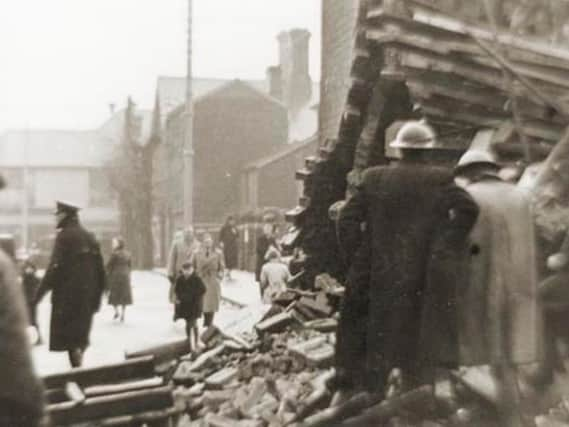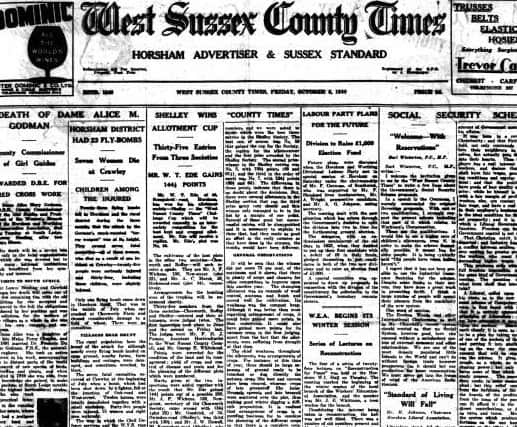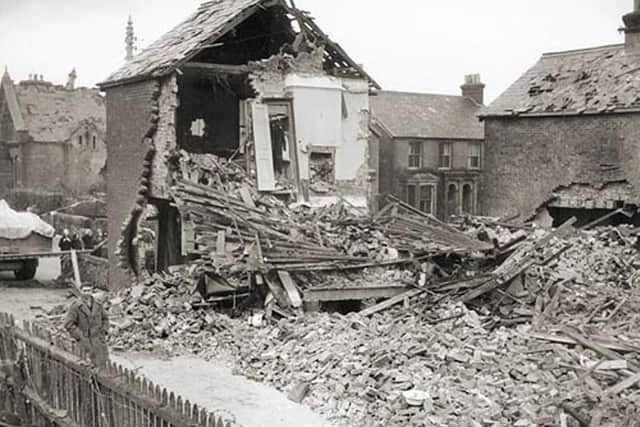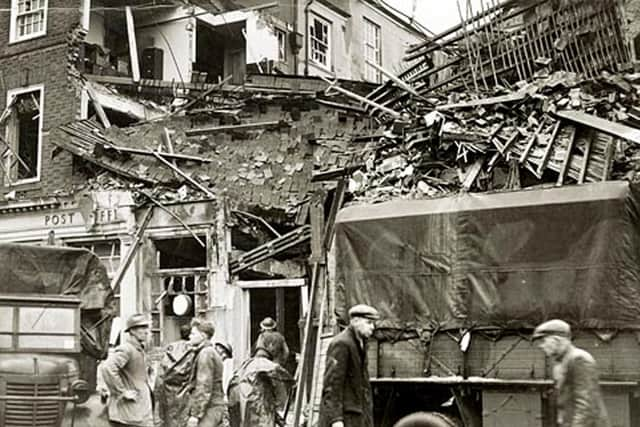Doodlebug dates called into question after history article


In an article we published in May, it stated the first of the Germans’ V-1 robots, also known as doodlebugs, fell at Marlands, Itchingfield, on June 6, as reported in the West Sussex County Times of Friday, October 6, 1944.
Research by Jeremy Knight, museum and heritage officer at Horsham Museum & Art Gallery, revealed: “The Royal Observer Corps had to plot the course of the doodlebugs, so the pilots could be told where to intercept them.
Advertisement
Hide AdAdvertisement
Hide Ad“In 1944, according to the West Sussex County Times, some 23 fly bombs fell in the Horsham area in three months during the height of the bombing.


“The first of the robots to land in the district came down at Marlands, Itchingfield, on June 6, causing damage to the stables and houses on the estate and killing about 50 chickens.”
Reader David Miller, from Newton Abbot in Devon, described the article as ‘an excellent and nicely illustrated piece’ but he questioned the date of June 6.
Mr Miller said: “This cannot possibly be correct, as the first-ever V-1 landed at Swanscombe, near Gravesend, at precisely 04.18 hours on June 13, 1944.


Advertisement
Hide AdAdvertisement
Hide Ad“Three others landed that night, the nearest to Itchingfield being at Cuckfield at 04.24. I would also doubt that any German attacks took place on June 6, which was D-Day and the Germans had many more pressing events to attend to on the French side of the Channel.
“So, I think that either the date given in the piece is a typo, or is the result of some misunderstanding.”
The original 1944 article does state June 6 for the attack on Marlands.
It adds: “This was before the official news that flying bombs were being used had been released, and when it flew over Horsham, many people, hearing the peculiar noise of its engine, thought it was a plane in trouble.”


Advertisement
Hide AdAdvertisement
Hide AdIt could be that the article should have read June 16 or 26 but we cannot be sure.
Jeremy said: “The comment was taken from the West Sussex County Times itself for 1944. At the end of the year, the paper ran articles that drew together various stories.
“Obviously with restrictions then in place over censorship, accounts published at the time often contained deliberate, or unintentional, inaccuracies that would be corrected later by historians, just as David has done.”
David would be most interested in any further details on the V-1 at Itchingfield, as it impinges on some research he is doing. Please email [email protected] if you can help.
Advertisement
Hide AdAdvertisement
Hide AdFurther information from the article of October 1944 stated: “Twenty-three flying bombs fell in Horsham and the rural district during the three months that the attack by the German’s much-vaunted ‘terror weapon’ was at its height.
“They caused seven fatal casualties, all of them women, who died as a result of one incident at Crawley, 25 people were seriously injured and 34, including three children, were slightly injured.
“Only one flying bomb came down in Horsham itself. That was in the middle of July, when one crashed at Chesworth Farm and caused considerable damage to a field of wheat. There were no casualties.
“The rural population bore the brunt of the attack for although nearly every flying bomb landed on open ground, nearby farms, farm buildings and cottages were damaged, and something wrecked, by blast.
Advertisement
Hide AdAdvertisement
Hide Ad“The seven fatal casualties occurred at Crawley at the beginning of July, when a bomb, which had been shot down by a fighter, fell at the junction of Oak Road and West Street. Twelve houses were totally demolished together with a small workshop. Forty-five people were injured, 15 women and eight men seriously.
“The way in which the Civil Defence services and the WVS rose to the occasion and the calm manner in which residents in the affected area behaved has been the subject of considerable praise.
“Less than a month later, another flying bomb fell in Crawley in the allotments in Malthouse Road but fortunately this failed to explode.
“Christ’s Hospital was damaged and a woman was slightly hurt on June 29 when a flying bomb exploded in mid-air after being shot-up by a fighter and at the end of August, houses on the Hombush Estate, including that of the owner, Brig-General H. Clifton Brown, MP, were slightly damaged when a bomb exploded in a wood.
Advertisement
Hide AdAdvertisement
Hide Ad“Villages that have also suffered include Itchingfield, Ifield, Billingshurst, Cowfold, Barns Green, Partridge Green, where Holesfield House was badly damaged, Colgate, Warnham, Shipley, Mannings Heath, Slinfold, Rusper and Rudgwick.”
News was also released the same week that Horsham had had 700 air-raid warnings since September 3, 1939.
A message from the Editor, Gary Shipton:
In order for us to continue to provide high quality and trusted local news, I am asking you to please purchase a copy of our newspapers.
With the coronavirus lockdown having a major impact on many of our local valued advertisers - and consequently the advertising that we receive - we are more reliant than ever on you helping us to provide you with news and information by buying a copy of our newspapers.
Advertisement
Hide AdAdvertisement
Hide AdOur journalists are highly trained and our content is independently regulated by IPSO to some of the most rigorous standards in the world. But being your eyes and ears comes at a price. So we need your support more than ever to buy our newspapers during this crisis.
Stay safe, and best wishes.